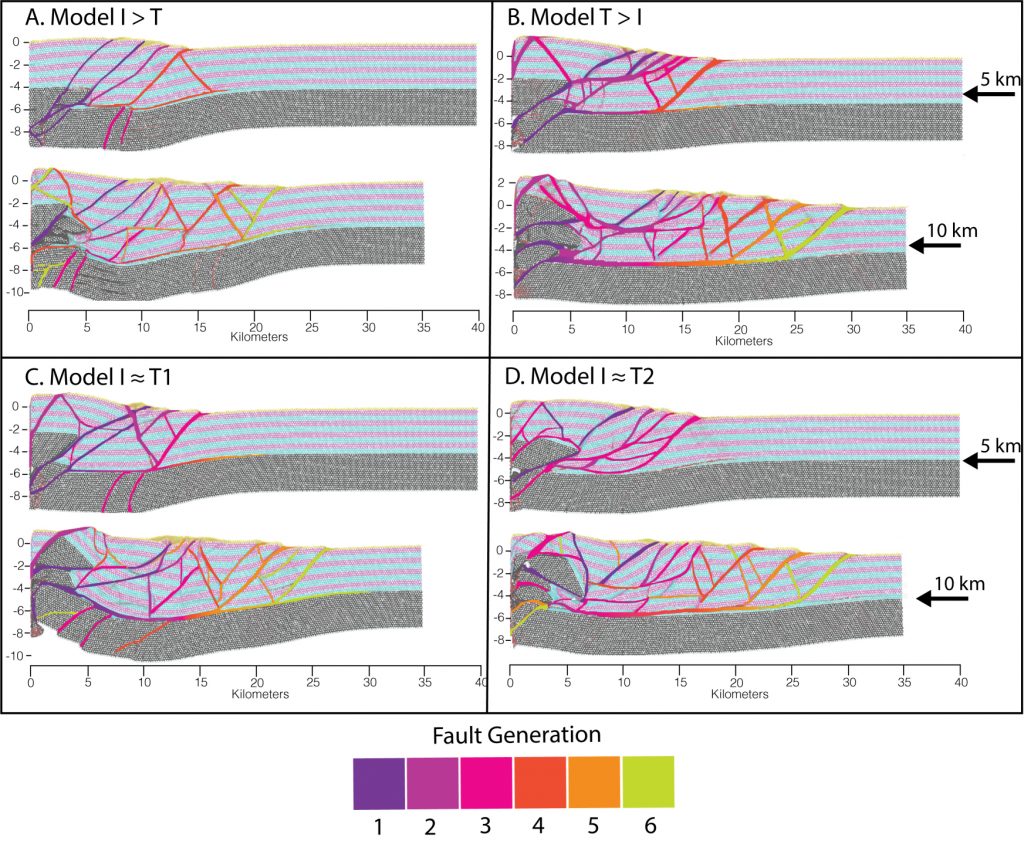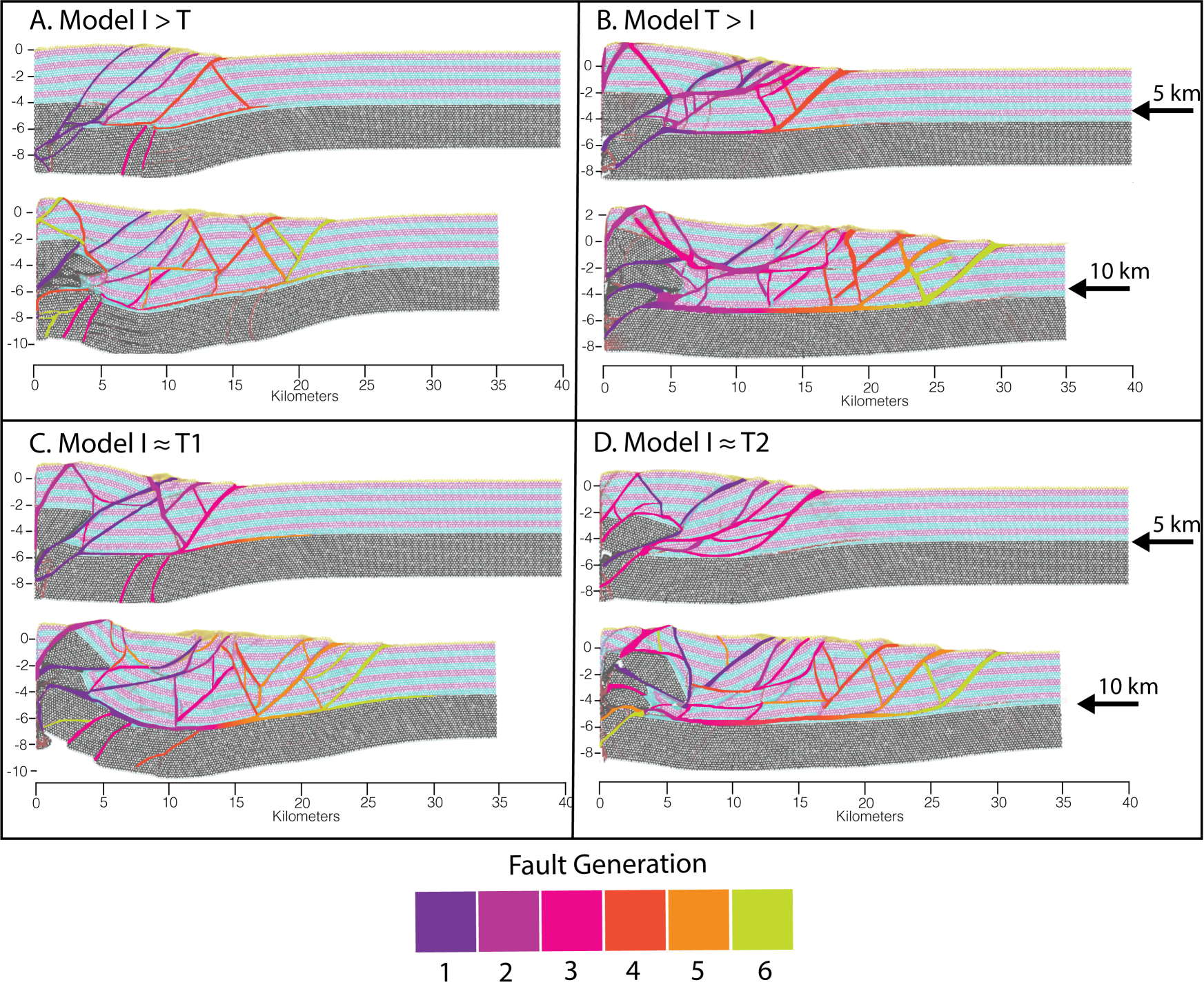The next EarthByte seminar will be held week, at 11am–12pm Wednesday 9th March (Sydney time), featuring EarthByte’s own Joe Ibrahim. The seminar will be held via Zoom: https://uni-sydney.zoom.us/j/82259139185. Full details are below:
The role of isostasy in the evolution and architecture of fold and thrust belts
Fold and thrust belts are areas of concentrated compressional deformation. The load imposed by the formation of a fold and thrust belt induces isostatic adjustments that can potentially influence their structural evolution. Here, we present numerical experiments that explore the interplay between the tempo at which a fold-thrust belt propagates, the tempo at which isostatic adjustment occurs, and its implications for a fold and thrust belts’ structural evolution. We run models using both an “Airy-style” local isostasy boundary condition and a flexural isostasy boundary condition. The “Airy-style” condition is more suited to the hinterland portion of an orogenic system with a warmer, more ductile lithosphere. The flexural isostasy boundary condition is more suited to the foreland of an orogenic system, where the lithosphere is more rigid.
Our experiments suggest that nearer to the hinterland – where the crust is more ductile – the interplay between the isostatic and tectonic rate plays a key role in the structural style of a fold-thrust belt. When the rate of isostatic adjustment is larger than the tectonic rate, fold-thrust belts are narrower, less elevated, and their internal architecture is more complex than the opposite situation when the tectonic rate is dominant. Conversely, towards the foreland where the lithosphere is more rigid, isostasy likely plays a less critical role in the structure of a fold-thrust belt. Our results are compared to natural analogs including the Sub-Andean zone fold-thrust belts.

![]()

